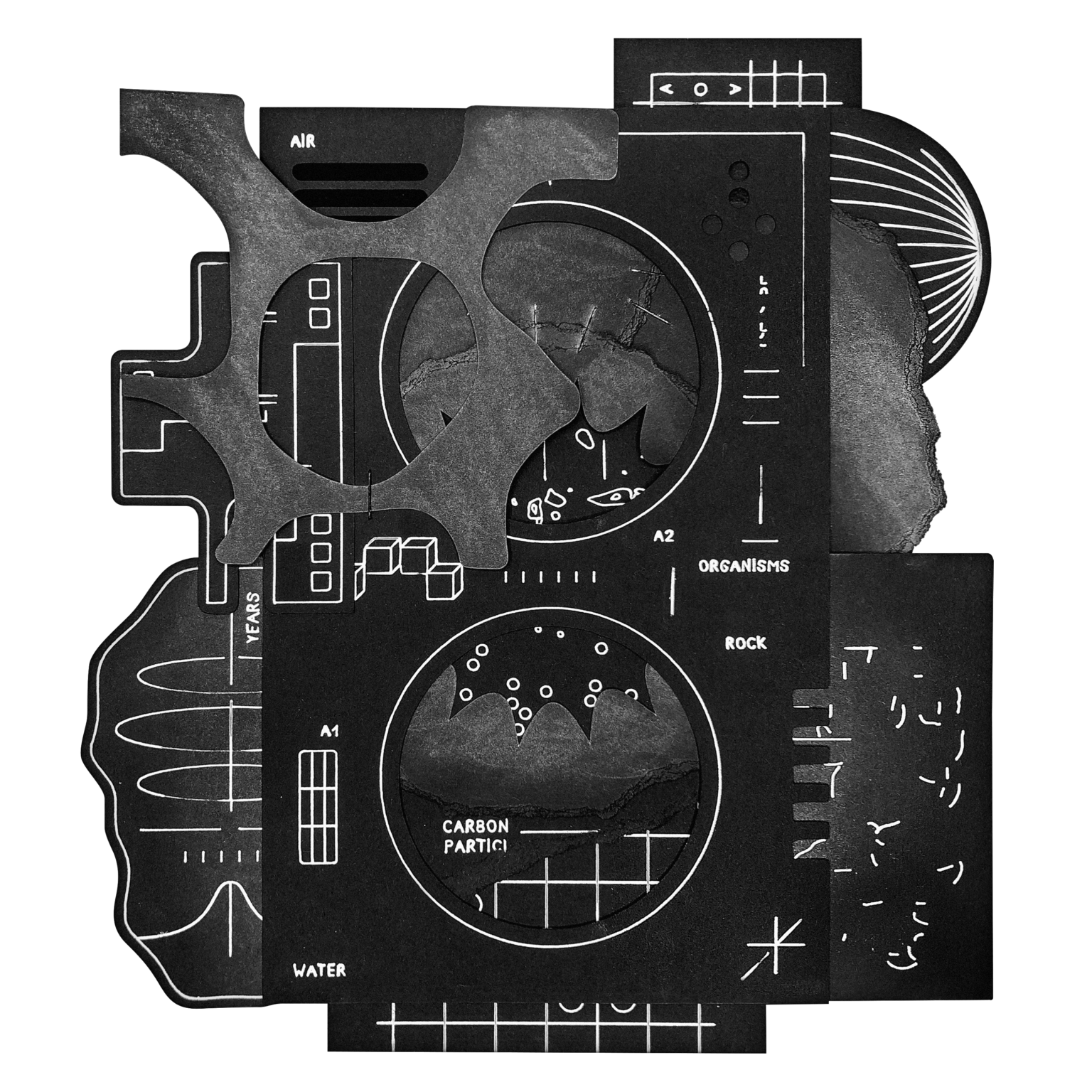
The special publication Anthropogenic Markers: Stratigraphy and Context explores and contours some of the historical contexts, epistemic settings, and conceptual interventions around the ongoing work of Anthropocene geology. In seven thematic dossiers, contributions from the fields of geochemistry and paleobiology, history and science studies, artistic research, archaeology, literary studies, and anthropology reflect on selected material markers of human impacts on earthly strata. Taken together, they form a unique interdisciplinary conversation across positions and perspectives, helping to map out and expand upon the many ways of tracing the evidence that defines the onset of a human-dominated and crisis-laden epoch.
Anthrobiogeochemical Cycles

Biogeochemical cycles concern the distinct pathways of chemical substances through the Earth’s surface reservoirs, that make up a global flow across the biosphere, the hydrosphere, the atmosphere, the cryosphere, and the uppermost part of the lithosphere. Over the course of the last century, human activities have started to exert a tremendous influence on these chemical fluxes, such that they would now be more accurately called anthrobiogeochemical cycles. Indeed, this term has been used before, but in the more limited context of describing only the human modification of metal cycles through mining and manufacturing.
But today, we face changes whose origins and effects do not seem so neatly limited to any single domain of human craft or trade. A prominent example of anthropogenic disruption of geochemical cycles is the alteration of the nitrogen and phosphorous cycles. With the invention of the Haber-Bosch process in the early twentieth century, the artificial fixation of atmospheric nitrogen to synthesize ammonia on an industrial scale has led to an entirely new fertilization regime in agricultural production, which in turn has contributed to the exponential growth of the world’s population ever since.
Or take instead the global carbon cycle, whose alteration through the burning of fossil fuels, land use change, and cement production is causing the atmosphere to warm, ice sheets to melt, sea levels to rise, and oceans to acidify. The carbon cycle holds special importance for designating a clear-cut Anthropocene signal. Direct analyses of the air trapped in polar ice reveal a rise in CO2 concentration already in the late eighteenth century, coinciding with some decisive improvements made to the steam engine. The combustion of coal to power these engines—the very engines, in the common metaphor, of the industrial revolution—has already released detectable quantities of fossil carbon. Increases in the atmospheric accumulation of carbon dioxide and methane, however, have been dramatically accelerating since around the mid-twentieth century with the onset of the “Great Acceleration” and the tapping into ever more reservoirs of coal, oil, and gas.
Not coincidentally, the scientific conceptualization and study of the carbon cycle followed these developments. Fossil carbon has an isotopic fingerprint of the long-dead plants and animals that these fuels originally derive from (the so-called Suess effect). Elaborating and quantifying this fingerprint was part of the scientific proof, and in that way part of the growing “self-awareness,” of the planetary impact that an industrialized humanity has on the Earth system. Another example for a more comprehensive understanding of the system-wide disruption of human powers was the research undertaken in the 1980s on the global effects of a thermonuclear war. It triggered a more substantial engagement with global change studies that from the assessment of atmospheric consequences of nuclear detonations extended to research on the whole biosphere and the functioning of the Earth system.
As this dossier makes clear, the onset of the Anthropocene did more or less co-evolve with the emergence of the epistemic and technical means of registering and understanding it. Isotope chemistry and nuclear science, (paleo)climate science and the study of biogeochemical cycles across the Earth—now viewed as a system—all belong to a converging field of modern geoscience whose methods and explanatory rigor directly fed into today’s toolbox of chronostratigraphy.
The human alteration of biogeochemical cycles through the mobilization of chemical elements for the purpose of generating and powering the technosphere’s industrial and agro-industrial mode of operation is, in fact, key to understanding the geohistorical importance of the current situation. The study of these cycles answers fundamental questions of the current geohistorical crisis: where it all started, where it is leading to, and what the strategies are to revert the dangerous march of the Great Acceleration by actively closing the anthrobiogeochemical cycles.
Biotic Change

Arguably the most well-known markers associated with geochronological subdivisions of Phanerozoic time are of biological origin. Body or trace fossils, as well as chemical signatures of life (biomarkers) are commonly used to identify stratigraphic boundaries. A biostratigraphic signature suggestive of anthropogenic impact, however, deals with a constellation of different life-based indicators, primarily human-mediated species extinction, the introduction and dispersal of neobiota, and broader ecological changes measurable in archives of organic matter.
This dossier addresses anthro-biological and techno-ecological signatures as markers manifested in the long-lasting and often irreversible human manipulation of the global biotic environment, considering how they reveal an “Anthropocene biosphere” that differs significantly from the biosphere’s earlier configurations. This new bio-technosphere created by and outliving the humans of the twentieth and early twenty-first centuries calls for a new taxonomy and a new aesthetics of the marine and terrestrial spaces that are now being depleted of many lifeforms and repleted with (a few) others, so the dossier advocates.
The megafauna extinction in the Pleistocene, known as the Late Quaternary Extinction, provides the first human-biostratigraphic signal which coincides with growing human populations and their geographical expansion, as well as the development of lithic technologies for hunting and butchering. Although this prominent extinction of large terrestrial mammals was the first hint of a sweeping human alteration of the global biosphere, it was time transgressive, coming in several waves in different parts of the world over about 50,000 years, and thus cannot count as a globally synchronous signal for the beginning of a new geological epoch, not for the Quaternary at least. The current extinction and extirpation pattern, which started in the twentieth century and is showing critical signs of becoming the sixth mass extinction on Earth, is a much more suitable candidate. The overexploitation of marine and terrestrial environments, and especially habitat destruction due to expansive agriculture, has now accelerated the rate of biodiversity loss to unprecedented levels.
Usually, coupled with these extinction processes is the phenomenon of neobiota: species that radiate beyond their pre-anthropogenic geographic range due to deliberate or accidental human introduction. While humans had already begun to translocate animals and plants in the Late Pleistocene, transporting them overseas in the nineteenth century in terrarium-like boxes such as the Wardian case made a substantial difference, both in inter-continental species dispersal and in sheer quantity. In the wake of an accelerated globalized economy in the twentieth century, however, human-mediated biogeographical changes have risen to a new level.
Today, the biotic configuration of certain ecosystems, such as the San Francisco Bay, bears almost no resemblance to that of just a century ago. This new scale of species migration also has severe consequences for human health. The increase of zoonotic diseases, in which viruses jump from animals to humans and vice versa, is one of the consequences of tearing down the geographic barriers between wild animals and humans.
Lastly, a very promising method to define an Anthropocene boundary is the eco-stratigraphic approach, which looks to environmental proxy data retained by specific organisms. Both living and fossil corals and trees, for instance, provide valuable archives of deteriorating ecologies and climate variability. Recording variations in environmental parameters at society-relevant time scales and resolutions is key to understanding the growing anthropogenic pressure that threatens biosphere integrity as a whole.
Combustion
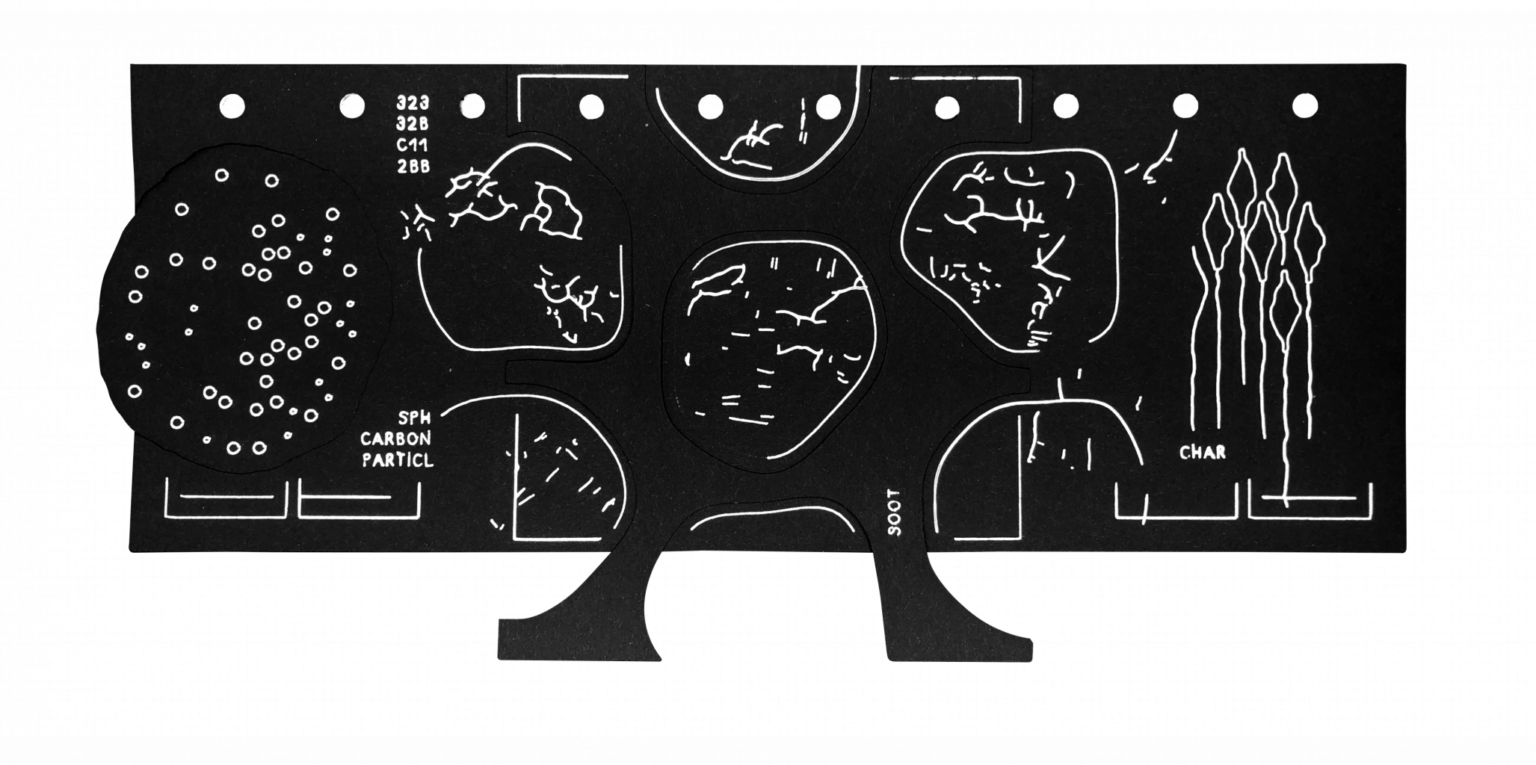
Humans are a fire creature. The use and control of fire and the mastery of combustion processes has had an extensive impact on much of human evolutionary and cultural development. In the early Pleistocene, Homo habilis developed techniques to capture and propagate fire. Artisanal pyrotechnologies and the burning of vegetation lead the archaic anthropos onto a distinct path of changing diets, socially coordinated behavior, and proto-forms of technology. Over time, human controlled fire-scapes transformed much of Earth’s surface and the biosphere, not least by eventually contributing to the emergence of sedentary agriculture. Here, combustion processes powered the emergence of knowledge, technology, and social stratification.
With the advent of high-temperature processes in kilns and furnaces, scaled up by industrial developments and then multiplied and distributed a million-fold in the form of the “internal combustion engine,” the anthropogenic use of fire, however, took on an entirely different dynamic in the Late Holocene. First, biomass burning became mechanized, seizing and industrially exploiting new energy sources like whale oil and spermaceti. Eventually, biomass was replaced with fossil fuel, unleashing the enormous quantities of solar energy that have accumulated over millions of years in the lithosphere and releasing gaseous and particulate forms of carbon into the atmosphere, hydrosphere, and biosphere (even back, in fact, into the bodies of whales).
While the technospheric mobilization of gaseous carbon is well known as it leads to phenomena like global warming, its particulate form provides another key signature for Anthropocene stratigraphy. Microscopic carbon residues, such as fly ash and spheroidal carbonaceous particles (SCPs) created by the high temperature combustion of fossil fuels, can be found in sediment deposits dating from about the mid-nineteenth century. These deposits are geographically confined, however, and it is only in more recent, mid-twentieth century layers that dramatic increases in SCP accumulation rates occur in sediments sampled in all world regions, providing a globally synchronous marker for the beginning of the Anthropocene.
The particle and chemical stratigraphic signatures of combustion are quintessential remnants of an energy-centered history, in which social change, climate change, the breathable materiality of air pollution, and a shift in natural history can be reflected and further explained. While SCPs and other combustion particulates such as black carbon (soot) are potent material markers for a GSSP setting at around 1950, their global presence registers a wide range of processes at the confluence of cultural and natural, industrial and geochemical histories, reaching essentially from prehistoric epochs to recent decades and into the near future.
Critical Environments
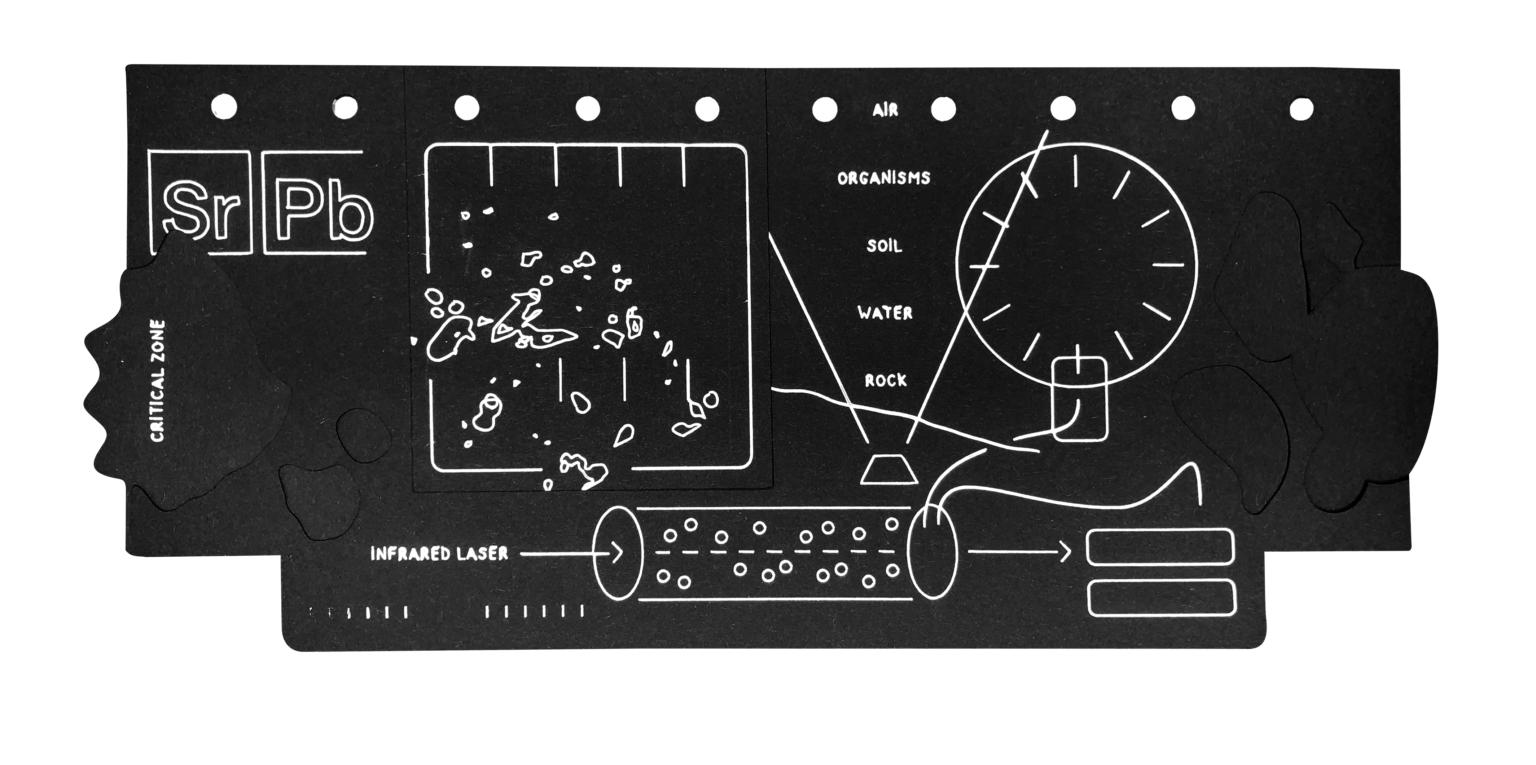
Since Jakob Johann von Uexküll introduced the concept of “Umwelten” (“environments”) into biology, it has become widely accepted that any living being must be considered as part of a specific spatio-temporal-sensual frame set by its own perception and interaction with its surroundings. In contrast to this biosemiotic conception, George Evelyn Hutchinson proposed the term ecological niches to account for the hyperspace in which living beings are able to dwell, leading much later to the theory of niche construction, which had a great impact on the evolutionary understanding of how species adapt the environment for their specific purposes. As different as the epistemic approaches of these theories may be, a common denominator is the fact that the survival of any particular species depends on its ability to transform itself as well as its habitat through various physiological, biochemical, and indeed “technological” processes.
No single species has done more to this end than Homo sapiens. Having shaped our surroundings ever since we started to use fire and stone tool technologies, our potential to actively transform our surroundings has changed dramatically over the course of the Holocene, beginning with the rise of agricultural practices such as animal husbandry, crop breeding, and landscape modification to improve productivity. However, since industrialization in the nineteenth century and especially during the Great Acceleration in the middle of the twentieth century, humanity has transgressed its spatio-temporal, biological, and energetic boundaries. Humans have fundamentally reorganized the environment to a point at which the traces of human existence have been permanently inscribed into the Earth, and altered what can be understood as the planetary environment, or planetary niche, as a whole.
In this dossier, however, the focus is not on the alteration of biogeochemical cycles, but on the residues and impacts of pollutants in their different media of transmission and exposure, such as airs, waters, and soils. The spotlight falls on the recordings within and by certain environments: sensitive environments, like estuaries and lagoons, become natural archives of exposure and general human intervention; toxic sites of human creation, such as tailing reservoirs in mining areas, turn into stratified memorials of contamination and social inequality.
Socio-technical systems like the industrial chemistry complex produce not only novel materials in the form of waste, which accumulate to form new strata, but also a substantial number of toxic by-products which are now distributed in various metabolic cycles and pathways. Similarly, heavy metals like lead and organic pollutants such as polycyclic aromatic hydrocarbons (PAHs) contaminate groundwater, soil, and marine environments, affecting microbes as well as whole ecosystems, thus presenting an incalculable risk to the living conditions of millions of plants and animals—including human communities. Although the danger of harmful substance exposure and a general understanding of the risks associated with industrial processes have been on the agenda of many institutional actors for a long time now, numerous ecological disasters have continued to alter environments irreversibly and cumulatively, at local and global scales.
Even as the social and political consequences of these tendencies are in certain ways highly visible around the globe, their full extent cannot be assessed yet. If a living being is considered to react and adapt to sensory data of its particular “Umwelt,” what new concept of environment is gaining traction now—in a time when novel materials and the use of technology at an industrial scale registers traces in nearly all of Earth’s spheres? Now that humans have constructed a technosphere niche unable to cope with the disasters of its own making what new bearing does the term “critical environment” hold?
Novel Materials and Technofossils
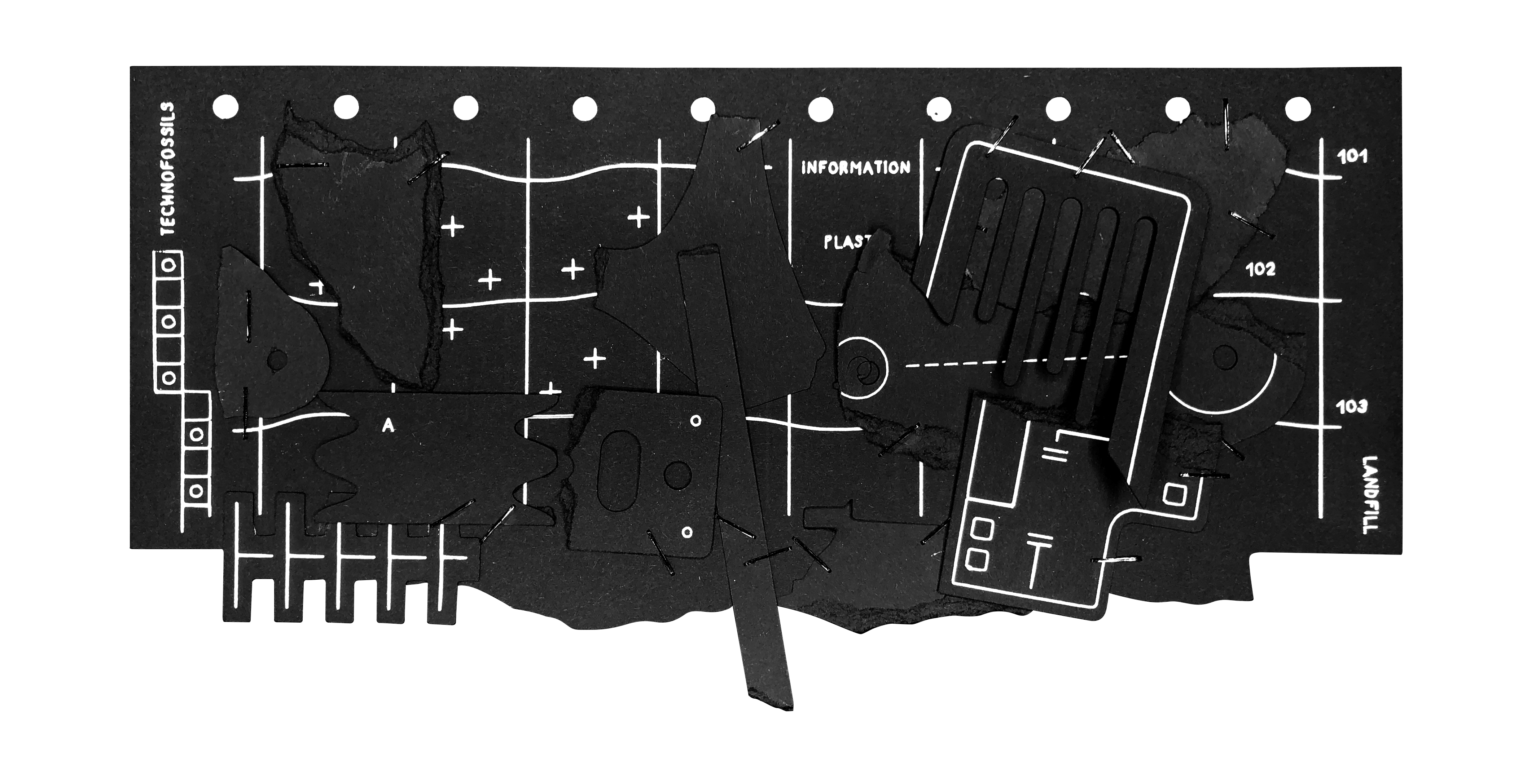
While some 5,300 natural minerals have evolved on Earth over geological time, they have been augmented by more than 200,000 different types of synthetic mineral-like compounds today. Some, like concrete, create the visible structures all around us. Others, like microplastics or synthetic aerosols, are volatile particles that we ingest and inhale without even perceiving. Whether visible or invisible to the eye, “novel materials” refer to the diversity of anthropogenic compounds that derive mostly from industrial production or industrial pollution and waste. Constituting our urban and also rural infrastructures, creating the material basis for modern daily life, getting dispersed through waste disposal and incineration: Novel materials make up the fabric of the technosphere.
Synthetic materials are nothing new. Ceramic and bricks have been around for millennia and make up a substantial part of what is now labelled as “artificial ground” in stratigraphic parlance, echoing the terms of archaeological investigation. What makes materials “novel” is that they often represent elements that are rare or entirely absent in nature, as they require artisanal or industrial techniques and certain technologies to be produced. Moreover, novel materials have specific functions, even if these are just of a symbolic or religious character. Such functional materials and human artefacts are thus also considered to constitute “technofossils,” adding to natural fossils of previous geological epochs. Technofossils, synthetic materials, and human-designed mineralogical species now do not just populate the “critical zone” of life on Earth’s surface, but extend from chemicals and structures underground, to manufactured gases in the atmosphere, all the way to orbiting and interplanetary space hardware.
In the mid-twentieth century novel material types exploded both in diversity and in production quantity. The production of concrete, made from portland cement, saw an exponential increase since the start of the Great Acceleration, making it today the most abundant anthropogenic sedimentary rock on Earth. Plastic represents an emblematic case-study to reflect on the dynamic relationship between petrochemistry, economic expansion, and consumption, but also sophisticated forms of cultural expressions which jointly shaped material independency from geobiological matter. A result of scientific efforts of the early twentieth century, mass-produced plastics, such as polyethylene and polypropylene, are essentially a post-Second World War phenomenon. With the availability of cheap oil, polymer-chain products became a signature material for modern life in the 1950s, an innovation capable of establishing mass consumerism and a form of “material democracy.” As a result, microplastics can now be found in the most remote areas, in our bodies, and even on the moon. Similar “histories of stuff” can be drawn from many other novel materials: asphalt covering vast stretches of ground; volatile glass microspheres used as additives in paints and coatings; aluminum, which in fact exists on Earth only in combined mineral form, and is now being mass produced at a rate of more than 60,000,000 metric tons every year.
Earth is undergoing a rapid human-mediated mineral evolution and diversification. As a consequence, modern materials science and industrial production are accentuating the given chemical disequilibrium on Earth to an extent never seen before. This dossier explores the material contexts and scientific accounts of this geohistorical anomaly, discussing novel materials and technofossils in their connection with material culture and human-impacted environments, and how these bear stratigraphic evidence of a twentieth-century transition into the Anthropocene.
Nuclear Anthropocene
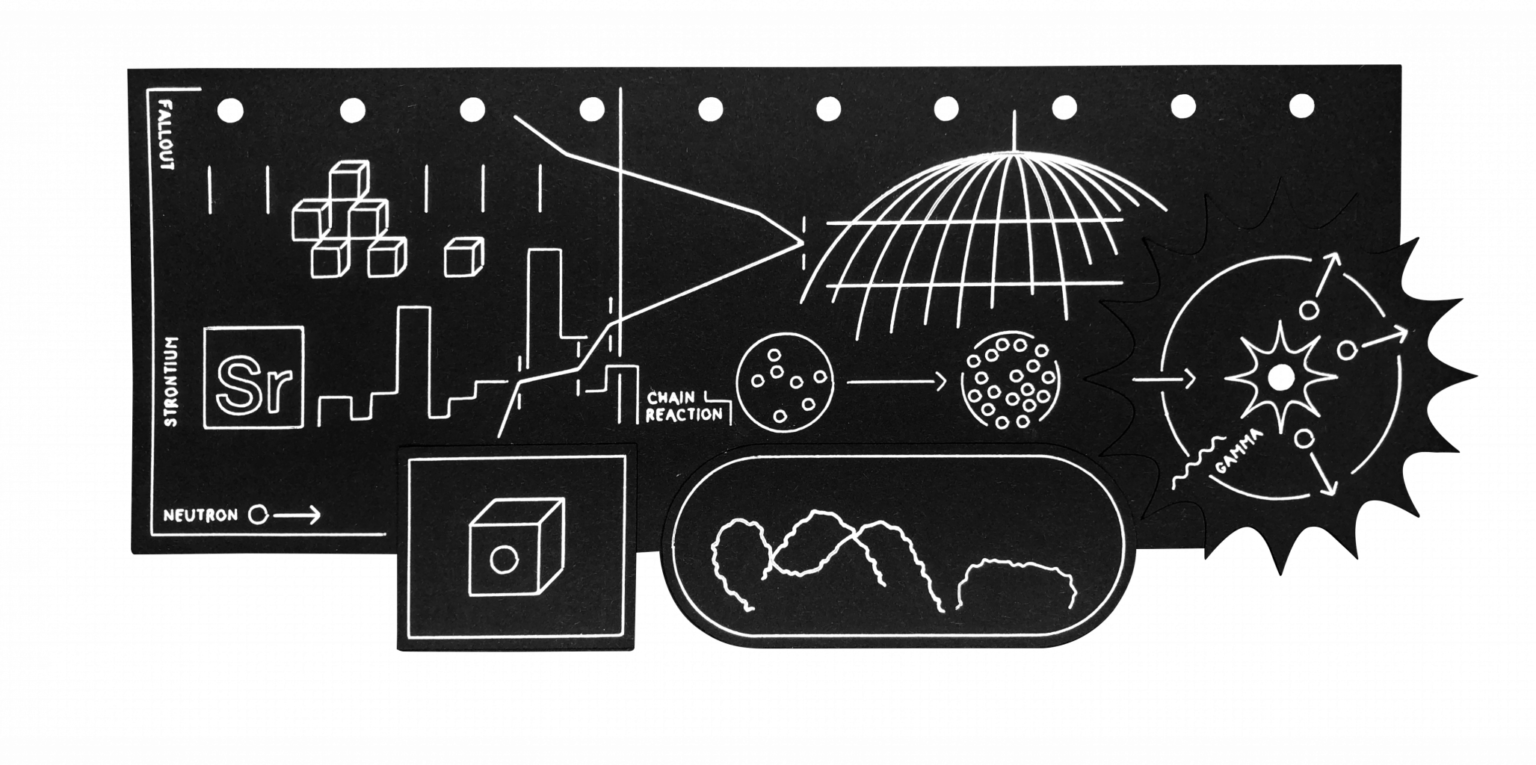
The phrase “atomic age” has been around since 1945 in reference to the world’s reframing by the newfound human control over nuclear forces. Nuclear weapons prompted both apocalyptic visions of humanity’s annihilation through mutually assured destruction and promises of abundance, progress, and modernity through the utilization of atomic energy. Since the first nuclear test detonation called “Trinity” and the bombings of Hiroshima and Nagasaki, all in 1945, nuclear technology has profoundly changed the world’s history and geopolitics, as well as our daily life and natural world.
On the one side, the atrocities of mass destruction in Japanese cities, on Pacific Atolls, and other “testing sites” across the globe forever stamped the self-image of the human as an engineer of death. On the other side, harnessing nuclear power and the emerging nuclear sector were hailed as instruments of national security, a hotbed of technological innovation, a wellspring for electric household energy, and a radically modern means of investigating the natural world and improving human bodies and diets. But soon the smiling side of this Janus face faded, and threat of radioactivity became the scare phenomenon of the second half of the twentieth-century. Radioactive contamination has changed the natural and the social environment to an extent that brings a whole new register into focus: the possibility that life on this planet could end as we know it.
In the 1950s, radioactive fallout from nuclear weapons tests was the first phenomenon to be defined as a planetary environmental issue, and today, radioactive traces are quintessential indicators of humanity’s impact on the Earth. The dispersal of artificial radionuclides from atmospheric detonations that started in 1945 and peaked in 1961–1962 has emerged as one of the best candidate signatures to fulfil the required criteria for a marker of the Anthropocene: It is synthetic, globally synchronous, and enduring on a geological timescale. A suite of different radioisotopes (including strontium-90, americium-241, carbon-14, plutonium-238, -239, -240, and caesium-137), some rather short-lived and others with half-lives long enough to be detected more than 100,000 years from now, provide a chemostratigraphic signal for the onset of the Anthropocene.
Beyond the potential of geological periodization acquired by radiogenic tracers, the dossier explores the broader connection between the nuclear and the Anthropocene, paying specific attention to how nuclear technology has forged this world. How was the risk of radioactive contamination addressed, institutionalized, and managed? How has the global order that emerged with and has characterized the nuclear age served as a matrix for framing, understanding, and addressing Anthropocene challenges? With questions like these the dossier addresses the nuclear age as an epistemic and technoscientific setting from which a global way of thinking about the ecological crisis has emerged—not least through the role that small-scale and localized science has played in contesting consensus within that setting. Ultimately, nuclear technology has served as a primary model for the establishment of global monitoring networks and international regulation and governance frameworks, the very infrastructures which have made the Anthropocene thinkable and measurable.
Strata, Signals, Symptoms
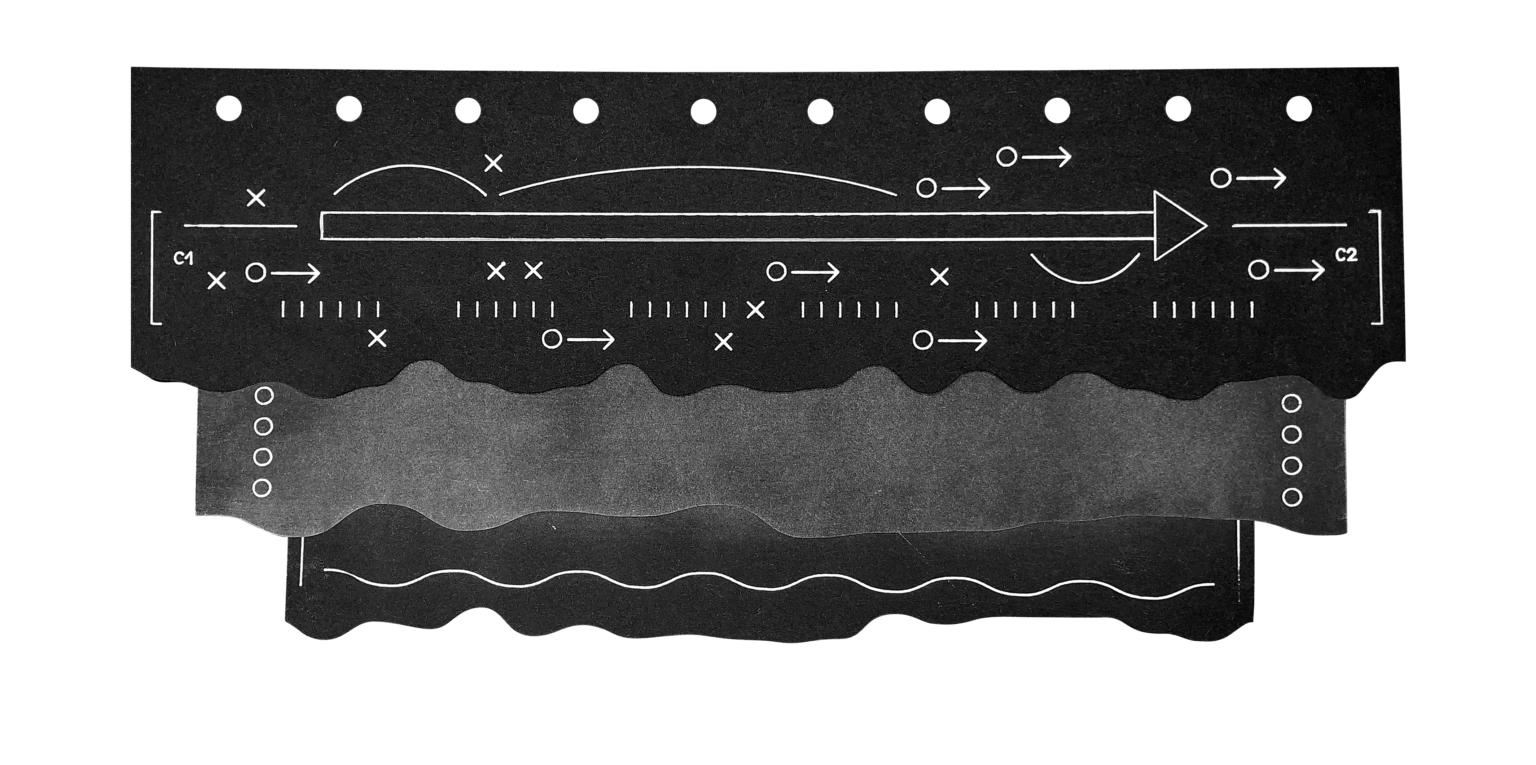
What marks the markers? This final dossier takes a step back from the particular cases and immediate historical contexts behind the Anthropocene to reflect on and theorize about some of the fundamental cultural shifts that accompany its demarcation. It encompasses contributions that aim at a more categorial reflection on what the foundations and limits are in telling the story of our planetary moment. What are the medial foundations for arresting a boundary in time? Has geology always been a reading of social signs and what is the indexical quality of geological markers? Is Anthropocene stratigraphy, after all, just a futile exercise in view of the coming catastrophe? How is our present defined both by the cultural abundance of the past and the scarcity of the future?
Over more than a decade, the term and concept of the Anthropocene has roused many debates and controversies. Whereas the Anthropocene Working Group aims to chart the beginning of the Anthropocene by mapping and documenting an unambiguous array of material indicators according to the formal criteria of chronostratigraphy, the concept wallows a much more muddled discursive space beyond the geosciences. While there is no denying the evidence for grave ecological changes the term seeks to name, its Western framing and historical novelty has been problematized, and much attention spent on the correct indexing of sources, origins, and culprits.
At times, however, this competitive struggle over interpretative authority seems to forget that Anthropocene stratigraphy and Anthropocene contextualization find themselves aligned in their expert discernment of signs. Anthropocene text (in the strata) and Anthropocene context (in the discourses around it) converge. Where the search for signals meets the identification of symptoms, a productive space of mutual reflection on the symbolic conditions for sorting, dating, naming, and marking the Anthropocene can arise.
This dossier engages in creating and replenishing such spaces where the Anthropocene signal finds a companion—not an enemy—in the semiosphere. The semiosphere, a term coined by Juri Lotman in response to Vladimir Vernadsky’s concept of the biosphere, is the web of significance that creates relations in and between societies.
Can the semiosphere, now roiled in a moment of radical expansion taking it far beyond the edges of Holocene consciousness, also help us to prevent the demise of the biosphere—the web of life—in the Anthropocene?
